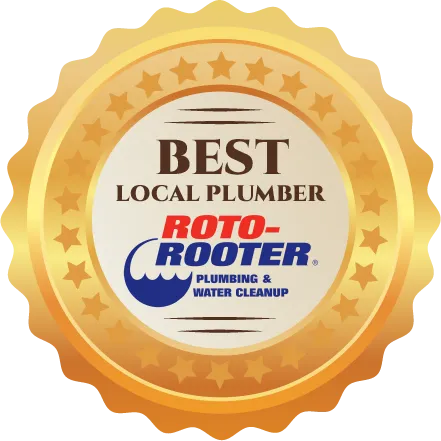5 Tips: Tankless Vs Traditional Water Heaters
When it comes to choosing between tankless and traditional water heaters, residents in this area should weigh several important factors. Understanding your hot water demand is crucial, as local climate and household size can significantly influence usage patterns. Energy efficiency is another key consideration, especially given the rising emphasis on sustainability in the community.
Installation costs can vary, influenced by local labor rates and the complexity of the installation process. Maintenance requirements also play an essential role; some homeowners may find that tankless systems require less frequent upkeep, which could be beneficial in areas with hard water that can affect traditional tanks.
Additionally, considering the lifespan and warranty options might save you money in the long run. In this region, where plumbing issues can arise due to seasonal changes, investing in a reliable system with a solid warranty can provide peace of mind. Let’s explore these tips to help you make an informed choice tailored to your local needs.
Understanding Energy Efficiency
When choosing between tankless and traditional water heaters, especially in regions with varying climates and water usage patterns, understanding energy efficiency is crucial.
In areas where cold winters lead to higher hot water demand, tankless water heaters can be particularly advantageous. They heat water on demand, which means they only consume energy when hot water is needed, potentially leading to significant savings on energy bills. This is especially beneficial for households with fluctuating hot water needs throughout the day.
On the other hand, traditional water heaters maintain a constant reservoir of hot water, consuming energy even when not in use. In climates with extreme temperature fluctuations, this standby heat loss can accumulate over time, affecting overall energy efficiency.
Evaluating the energy efficiency ratings is key; models with a higher energy factor (EF) rating indicate superior efficiency. It’s wise to seek out units that meet or exceed ENERGY STAR guidelines, as this can help maximize savings and reduce environmental impact while addressing local energy challenges.
Analyzing Hot Water Demand
Evaluating your household’s hot water demand is essential for choosing the right water heater. Understanding how much hot water you use daily helps you determine whether a tankless or traditional model fits your needs best.
In regions where temperatures can fluctuate significantly, such as during winter months, hot water usage may increase for heating purposes. Consider these key factors:
- Peak Usage Times: Identify when your household uses the most hot water—mornings, evenings, or weekends. In colder climates, mornings may see a surge in hot water demand as families prepare for the day.
- Number of Fixtures: Count how many showers, sinks, and appliances rely on hot water simultaneously. In areas with larger homes and multiple bathrooms, simultaneous usage can create a high demand for hot water.
- Family Size: Larger families typically require more hot water than smaller households, influencing your choice. In densely populated neighborhoods, the demand for consistent hot water supply can be higher, necessitating a more robust water heating solution.
Evaluating Installation Costs
Understanding your hot water demand is crucial when evaluating installation costs in your area. If you’re considering a tankless water heater, be aware that installation can be on the higher side due to the need for specialized venting and the potential requirement to upgrade your gas line or electrical system.
Local building codes and climate factors can also influence the complexity and cost of installation.
In comparison, traditional water heaters generally have lower initial installation costs, making them an attractive option for many homeowners. However, it’s important to consider the long-term expenses associated with energy consumption and maintenance in your region.
Local energy rates and the typical lifespan of water heaters in your area can significantly impact your overall costs.
Assess your budget and decide how much you’re willing to invest initially versus over time to find the best option that aligns with your financial goals while taking into account the specific challenges and opportunities presented by your local market.
Considering Maintenance Requirements
While you might be drawn to the idea of a tankless water heater for its energy efficiency, it’s essential to reflect on the maintenance requirements associated with both options.
In areas where hard water is prevalent, tankless heaters typically require descaling every 6-12 months to prevent mineral buildup. When issues arise, repairs can be complex and may require specialized technicians.
Traditional water heaters, common in many households, need regular flushing to eliminate sediment buildup, which can be a concern in regions with high sediment content in the water supply.
This annual maintenance can help extend their lifespan and ensure efficient operation.
Consider these maintenance aspects specific to your region:
- Tankless Water Heaters: Descaling every 6-12 months, particularly important in hard water areas.
- Traditional Water Heaters: Flushing the tank annually to remove sediment, especially in areas with mineral-rich water.
- Professional Inspections: Both types benefit from routine checks to catch potential issues early, which is crucial in preventing costly repairs down the line.
Understanding these maintenance needs can help you make a more informed decision about which water heater best suits your home and local conditions.
Assessing Lifespan and Warranty Options
When selecting between tankless and traditional water heaters, it’s essential to consider their lifespan and warranty options, as these aspects can significantly influence your long-term investment, especially in areas with varying water quality and temperature fluctuations.
Tankless models generally have a lifespan of 20 years or more with proper maintenance, which is beneficial in regions where traditional heaters might struggle due to hard water or inconsistent temperatures. Traditional heaters typically last around 10 to 15 years, which may necessitate more frequent replacements in certain climates.
In terms of warranties, tankless units often provide longer coverage, typically extending up to 15 years, while traditional models usually offer warranties ranging from 6 to 12 years.
It’s important to carefully review the warranty details, as they can differ significantly between manufacturers. Choosing a unit with a strong warranty can offer peace of mind and safeguard your investment, particularly in locations where water quality may affect the longevity of the heater.
Conclusion
When deciding between tankless and traditional water heaters, consider these tips tailored to local conditions. First, evaluate your household’s hot water demand, especially during peak usage times like winter mornings when multiple showers may coincide. It’s also crucial to consider energy efficiency ratings, as local climate can impact heating costs over time, leading to significant long-term savings.
Installation costs can vary, particularly based on local labor rates and building codes, with tankless models often requiring a more substantial initial investment due to their specialized installation needs. Maintenance is another important factor; in areas with hard water, for instance, tankless systems may require more frequent descaling to ensure optimal performance.
Lastly, be sure to check warranty options that correspond with the lifespan you expect from your unit, as local factors like water quality can affect durability. By making a well-informed decision, you can ensure that your choice will serve your household effectively for years to come.
Tags





